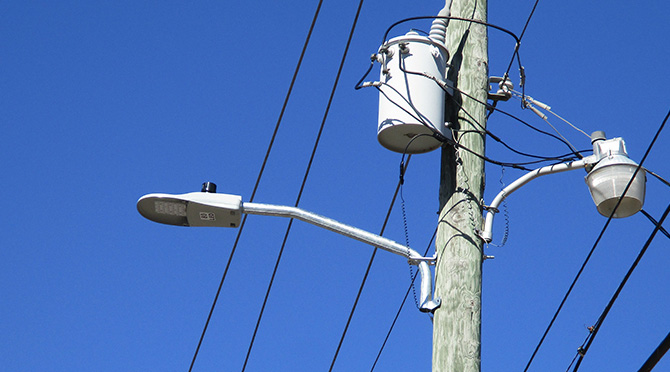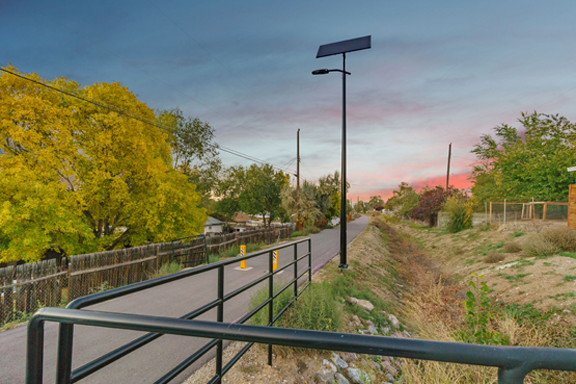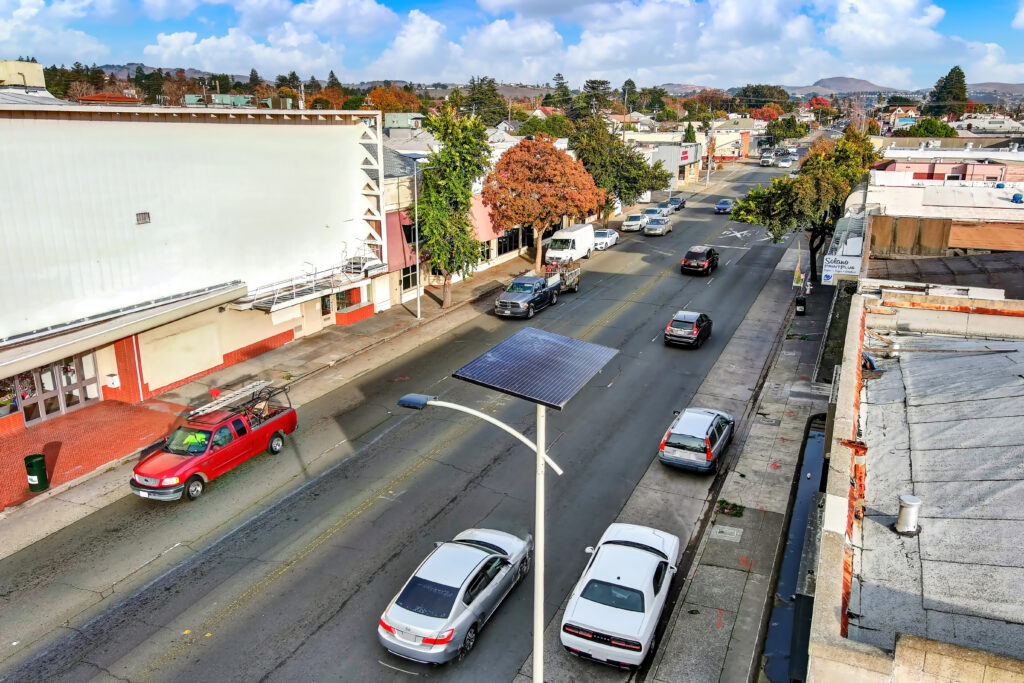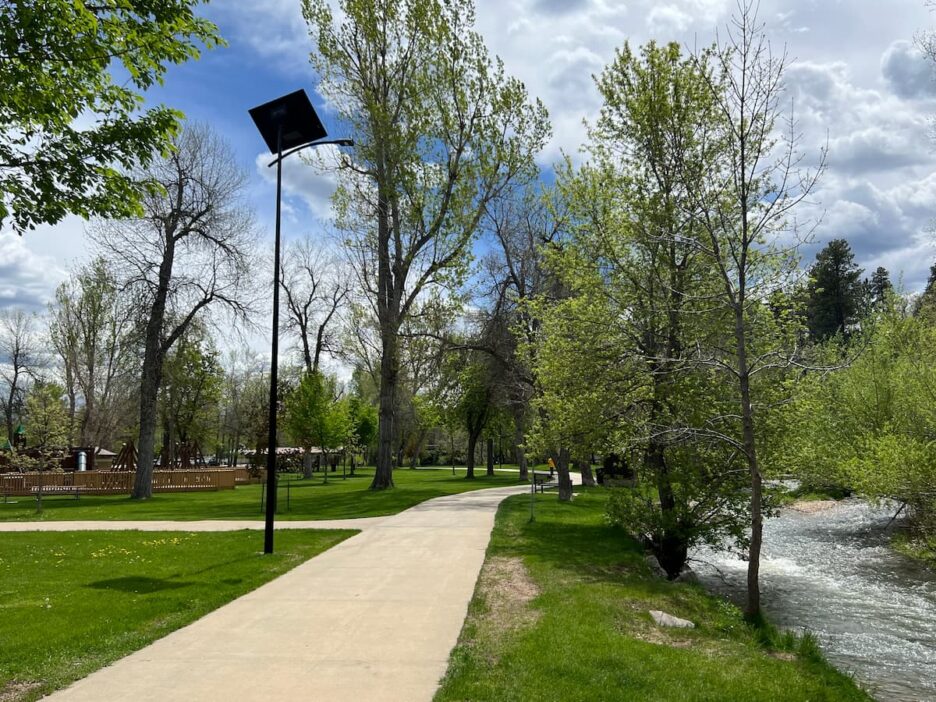Extreme weather is no longer rare. From catastrophic wildfires to once-in-a-century floods, climate disruption is now a routine part of civic planning. For cities, tribes, and federal agencies tasked with keeping people safe, this means the very foundation of public infrastructure must change—starting with the systems that support visibility, access, and emergency response.
Lighting is often treated as a utility expense. But in the context of climate resilience, it becomes something far more critical: a safeguard for mobility, safety, and continuity.
Traditional grid-tied lighting is vulnerable to outages, theft, and slow recovery times. In contrast, modern solar lighting—engineered to operate independently and adapt to local environmental stressors—is emerging as a cornerstone of climate-resilient design.
At Fonroche Lighting America, we’ve seen this shift firsthand. From dense urban corridors to flood-prone rural roads, stakeholders are choosing off-grid systems not just for sustainability—but for performance when the grid can’t deliver.
Table of Contents
The Pressure on Traditional Lighting Systems
Across the U.S., public infrastructure is being tested like never before. Extreme weather, outdated grids, and rising energy costs are converging into a new normal: uncertain uptime.
Nowhere is this more visible—or dangerous—than in street and roadway lighting.
Grid-connected lighting systems are often the first to fail during disasters. Hurricanes, wildfires, ice storms, and even heatwaves routinely take down electrical infrastructure, leaving streets, intersections, and evacuation routes in the dark when visibility is most critical.
But the threat isn’t always natural. In places like California, wire theft has created blackout zones that last months—impacting entire neighborhoods and exposing cities to lawsuits, liability, and lost public trust.
Meanwhile, repairs are slow and expensive. Rewiring and trenching require permits, crew coordination, and utility approvals—none of which move fast in an emergency.
The Result?
- Blackouts compromise public safety.
- Critical routes go unlit during evacuations.
- Project budgets balloon with unplanned repairs.
- Communities lose confidence in essential services.
Lighting that relies on the grid is lighting that can fail. And in today’s climate, failure isn’t just a possibility—it’s a guarantee.

How Solar Lighting Strengthens Climate Resilience
Solar lighting isn’t just an energy alternative—it’s a resilience solution.
Because Fonroche systems operate fully off-grid, they deliver critical advantages in environments where grid-connected lighting falls short. No trenching, no copper wiring, no connection to a fragile utility system. Just light—365 nights a year, even when the grid is down.
Key Resilience Benefits:
- Autonomous Operation: Each light functions independently, meaning there’s no cascading failure risk during storms or outages.
- Disaster-Ready: Solar lighting supports evacuation corridors, emergency staging areas, and rural access points without grid dependency.
- Vandalism-Proof: With no exposed wires or connection points, Fonroche SmartLights eliminate the most common targets of copper theft.
- Fast Recovery: Municipal crews can install lights in under 45 minutes—restoring safety in days, not months.
This isn’t just hypothetical. Cities like Vallejo, CA turned to Fonroche after grid-tied lighting remained offline for over two years due to a damaged transformer. Solar restored corridor lighting in weeks—with no utility approval required.
Who Benefits?
- Municipalities that need guaranteed uptime for public safety
- Tribal nations maintaining sovereignty and ecological integrity
- Military bases and federal facilities where visibility supports national security
- Developers and planners seeking to future-proof projects against power disruption
When conditions are unpredictable, solar lighting becomes more than a feature—it becomes infrastructure you can count on.

Designed for Local Conditions, Not Assumptions
Many lighting systems are sized for averages. But in resilience planning, averages don’t matter—worst-case scenarios do.
That’s why Fonroche systems are engineered using precise local data and environmental modeling. Every project begins with a site-specific solar and climate study to ensure performance across the full range of real-world conditions—not just under ideal ones.
Engineering That Matches the Environment
- 10-Year Local Irradiance and Weather Data
We simulate performance based on the worst solar month, accounting for cloud cover, snow, temperature, and humidity. - Custom Photometric Layouts
Each lighting layout is modeled for IES compliance, uniformity, glare control, and visual comfort—regardless of terrain or ambient light. - Power 365 Smart Energy Management
Our proprietary system dynamically adjusts lighting output based on real-time battery health and environmental inputs, ensuring 365-night reliability.
This approach allows Fonroche systems to succeed where others fail—from northern cities facing months of low sunlight to coastal installations exposed to corrosive salt air and hurricane-force winds.
There’s no oversizing, no guesswork—just right-sized performance, verified before deployment.
“We engineer every system to succeed in the worst month of the year. That’s how you deliver true resilience.” — Fonroche Design Team
Policy and Planning: Where Solar Aligns
In the age of climate disruption, infrastructure is no longer evaluated solely on cost or coverage. Planners and policymakers are prioritizing systems that deliver resilience, sustainability, and long-term adaptability—all while meeting community expectations for safety, aesthetics, and equity.
Streetlighting plays a more strategic role in this shift than ever before.
Solar Lighting as a Climate Infrastructure Asset
Off-grid solar lighting offers more than energy efficiency. It delivers certainty. With no reliance on trenching, copper wiring, or vulnerable substations, solar lighting ensures visibility when traditional systems falter—especially during weather-related grid failures or civil emergencies.
And because Fonroche systems are engineered for site-specific performance and 365-night reliability, they offer a future-ready foundation for evolving public infrastructure needs.
For municipal engineers, tribal planners, and federal facility managers, this means:
- Reduced operational risk from outages, vandalism, and utility delays
- Lower lifetime costs and streamlined maintenance schedules
- Improved public trust through faster deployment and higher reliability
- Alignment with environmental stewardship and community values
These outcomes are particularly vital as cities and agencies seek to meet climate resilience benchmarks and integrate low-impact infrastructure across public works, transportation, and emergency planning initiatives.
When infrastructure must work under pressure, solar lighting performs—not reacts. That’s what makes it essential to next-generation planning.

Conclusion: Infrastructure That Can Withstand Tomorrow
Cities, tribes, and infrastructure agencies are no longer asking if resilience matters—they’re asking how fast they can implement it.
Streetlighting, once viewed as a passive utility, is now recognized as a strategic asset—one that affects emergency response, public confidence, and sustainability commitments. And as extreme weather, grid failures, and energy mandates become more common, traditional lighting systems simply don’t offer the certainty communities need.
Solar lighting, when engineered for performance and adaptability, meets this moment.
Fonroche Lighting America’s SmartLight systems are:
- Designed for climate extremes
- Validated through global deployment
- Independent of fragile grid infrastructure
- Aligned with policy, funding, and sustainability goals
Whether you’re upgrading a corridor, planning for disaster resilience, or designing infrastructure from the ground up—solar lighting is no longer a future-forward idea. It’s today’s best practice.
Your Next Project Starts Here
Let’s design infrastructure that adapts—not breaks.
Talk to a Fonroche specialist today about building lighting systems that deliver 365 nights of reliability, even when the grid can’t.

